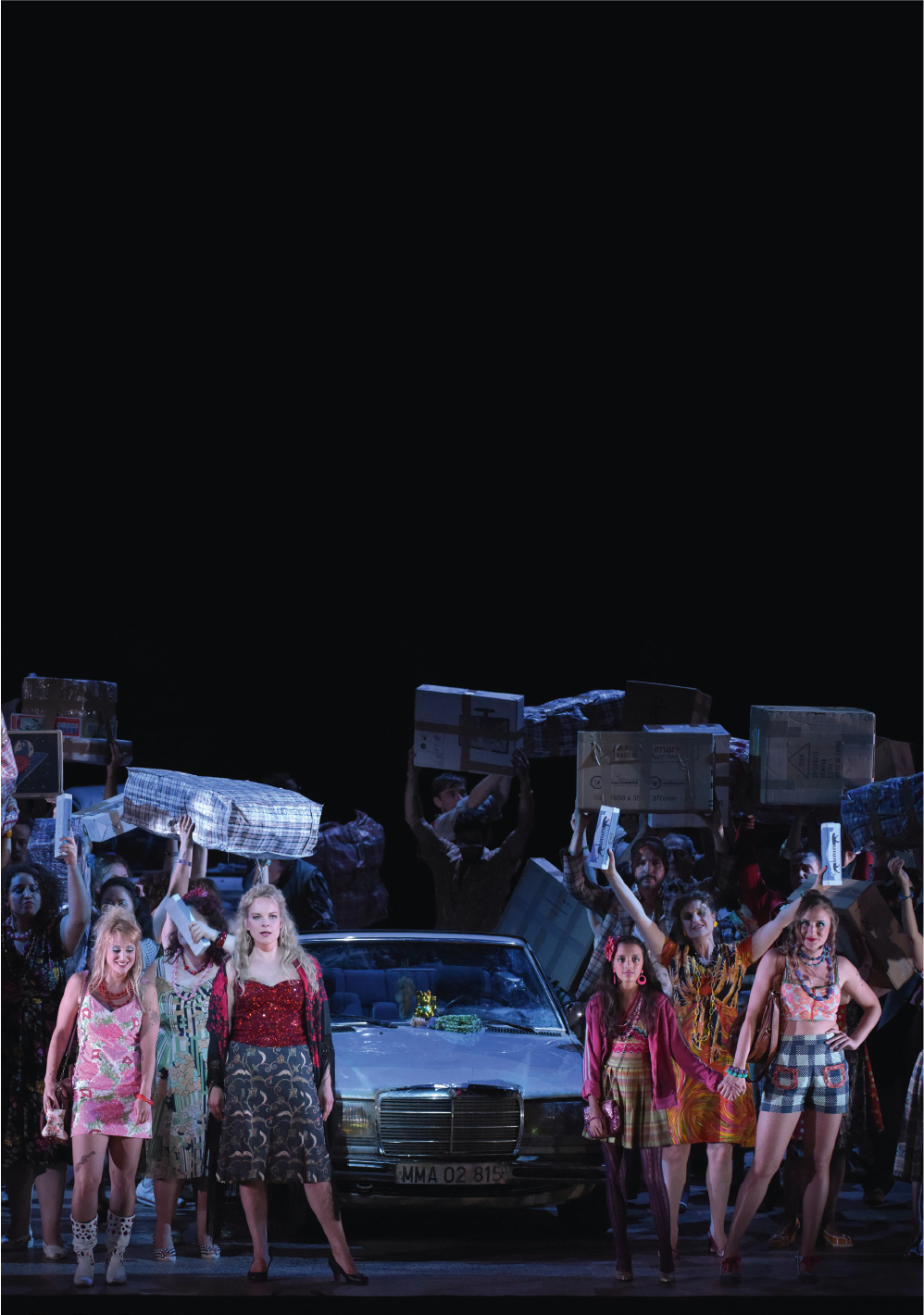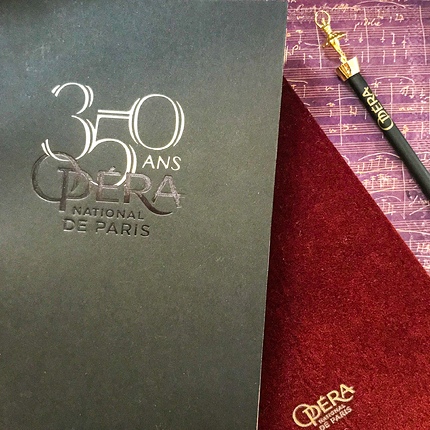Synopsis
Numerous choreographers have drawn on Shakespeare’s play for the dramatic substance to their ballets. George Balanchine was no exception. In 1962, to a score by Mendelssohn, he created his own version of Shakespeare’s comedy for the New York City Ballet. Ever faithful to his vocabulary, subtly blended with mime, a complex romantic narrative unfolds in two acts and six tableaux. Revolving around Theseus, Duke of Athens, and Hippolyta, Queen of the Amazons, the plot thickens with a domestic quarrel between the king of the elves and the fairy queen. Things take another turn with the mischievous intervention of Puck and his magic love potion and the arrival of a troupe of amateur actors. A Midsummer Night’s Dream is one of George Balanchine’s rare narrative ballets. The sets and costumes were entrusted to another great magician of the stage, Christian Lacroix.
Duration : 2h05 with 1 interval
-
Opening
-
70 min
-
Intermission 20 min
-
35 min
-
End
Artists
After William Shakespeare,
A Midsummer Night’s Dream
Creative team
Cast
- Saturday 18 June 2022 at 19:30
- Tuesday 21 June 2022 at 19:30
- Sunday 26 June 2022 at 14:30
- Monday 27 June 2022 at 19:30
- Wednesday 29 June 2022 at 19:30
- Thursday 30 June 2022 at 19:30
- Saturday 02 July 2022 at 19:30
- Sunday 03 July 2022 at 19:30
- Tuesday 05 July 2022 at 19:30
- Wednesday 06 July 2022 at 19:30
- Friday 08 July 2022 at 19:30
- Saturday 09 July 2022 at 19:30
- Monday 11 July 2022 at 19:30
- Tuesday 12 July 2022 at 19:30
- Thursday 14 July 2022 at 14:30
- Friday 15 July 2022 at 19:30
- Saturday 16 July 2022 at 19:30
Latest update 15 July 2022, cast is likely to change.
Latest update 15 July 2022, cast is likely to change.
Latest update 15 July 2022, cast is likely to change.
Latest update 15 July 2022, cast is likely to change.
Latest update 15 July 2022, cast is likely to change.
Latest update 15 July 2022, cast is likely to change.
Latest update 15 July 2022, cast is likely to change.
Latest update 15 July 2022, cast is likely to change.
Latest update 15 July 2022, cast is likely to change.
Latest update 15 July 2022, cast is likely to change.
Latest update 15 July 2022, cast is likely to change.
Latest update 15 July 2022, cast is likely to change.
Latest update 15 July 2022, cast is likely to change.
Latest update 15 July 2022, cast is likely to change.
Latest update 15 July 2022, cast is likely to change.
Latest update 15 July 2022, cast is likely to change.
Latest update 15 July 2022, cast is likely to change.
Les Étoiles, les Premiers Danseurs et le Corps de Ballet de l’Opéra
avec la participation des élèves de l’École de Danse
Orchestre et Choeurs de l’Opéra national de Paris
Media
Access and services
Opéra Bastille
Place de la Bastille
75012 Paris
Public transport
Underground Bastille (lignes 1, 5 et 8), Gare de Lyon (RER)
Bus 29, 69, 76, 86, 87, 91, N01, N02, N11, N16
Calculate my routeIn both our venues, discounted tickets are sold at the box offices from 30 minutes before the show:
- €25 tickets for under-28s, unemployed people (with documentary proof less than 3 months old) and senior citizens over 65 with non-taxable income (proof of tax exemption for the current year required)
- €40 tickets for senior citizens over 65
Get samples of the operas and ballets at the Paris Opera gift shops: programmes, books, recordings, and also stationery, jewellery, shirts, homeware and honey from Paris Opera.
Opéra Bastille
- Open 1h before performances and until performances end
- Get in from within the theatre’s public areas
- For more information: +33 1 40 01 17 82
Online
Opéra Bastille
Place de la Bastille
75012 Paris
Public transport
Underground Bastille (lignes 1, 5 et 8), Gare de Lyon (RER)
Bus 29, 69, 76, 86, 87, 91, N01, N02, N11, N16
Calculate my routeIn both our venues, discounted tickets are sold at the box offices from 30 minutes before the show:
- €25 tickets for under-28s, unemployed people (with documentary proof less than 3 months old) and senior citizens over 65 with non-taxable income (proof of tax exemption for the current year required)
- €40 tickets for senior citizens over 65
Get samples of the operas and ballets at the Paris Opera gift shops: programmes, books, recordings, and also stationery, jewellery, shirts, homeware and honey from Paris Opera.
Opéra Bastille
- Open 1h before performances and until performances end
- Get in from within the theatre’s public areas
- For more information: +33 1 40 01 17 82
Online
You will also like

















































































